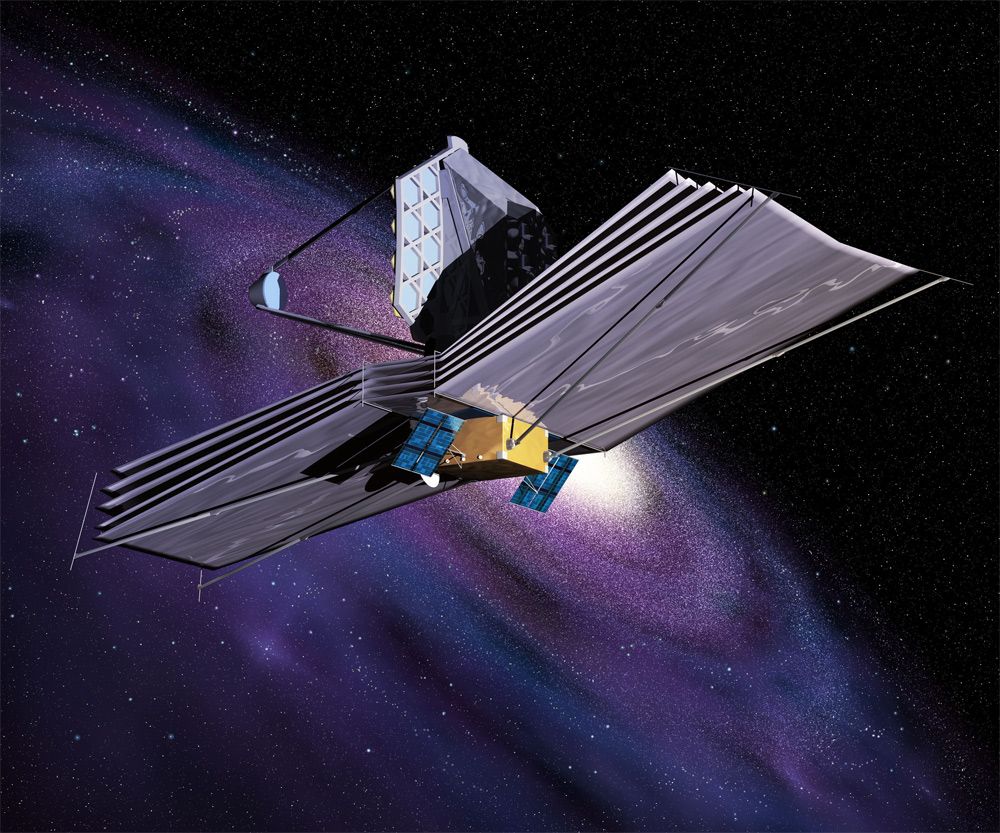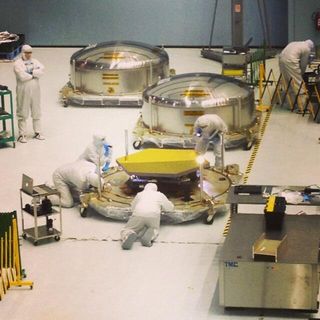NASA's Next Great Space Telescope Passes Major Milestone

GREENBELT, Md. — The James Webb Space Telescope, NASA's next flagship space observatory, has passed a major milestone on its road to its planned 2018 launch: the delivery of the last three mirrors that will make up its complicated infrared-seeking innards.
The mirror delivery for the $8.8 billion James Webb Space Telescope lays a critical brick in the road toward deploying the most powerful space telescope ever built. When complete, the telescope is expected to have seven times the light-collecting power of its predecessor, the Hubble Space Telescope, and should provide answers to questions about the early universe and the chances of life on other planets.
The telescope "is an absolutely impressive piece of engineering and includes technologies that make this spacecraft unlike any other we've ever developed before," NASA Administrator Charles Bolden said in a news conference here Monday (Feb. 3), adding that the telescope is on track for launch in 2018. [Photos: Building the James Webb Space Telescope]

Sen. Barbara Mikulski (D-Md.), chairwoman of the Senate Appropriations Committee, which funds NASA, congratulated the project's leaders on their progress.
"I'm so proud of Goddard," Mikulski said. "This new telescope will secure our lead in astronomy for the next 50 years," she said. Mikulski has fought for funding to keep the telescope on track, and Congress has passed fiscal appropriations for 2014, funding NASA at $17.6 billion.
The James Webb Space Telescope, a joint effort by NASA, the European Space Agency (ESA) and the Canadian Space Agency (CSA), will be able to peer through the cosmic dust at the most distant objects in the universe, including the earliest galaxies and planets around other stars. The telescope will take images of the universe in infrared light (i.e., heat), and break the light into its component colors, or spectra. This will help scientists learn what distant objects are made of and how quickly they're moving.
All four of the JWST's science instruments and all 18 of its hexagonal mirror segments now reside in Goddard's massive clean room, a 1.3-million cubic foot (37,000 cubic meters), dust-free environment.
Sign up for the Live Science daily newsletter now
Get the world’s most fascinating discoveries delivered straight to your inbox.
The mirrors will fit together to form a 21.3-ft. (6.5 m) large mirror, and will lie inside a flexible backplane, where a series of tiny motors will position each segment to bring the telescope into focus. This technology will allow scientists to make adjustments even after the telescope is in space, Bolden said.
Ball Aerospace & Technologies Corp. built the mirrors, which are made of beryllium with a gold coating that reflects infrared light especially well. Each mirror weighs about 46 lbs. (20 kilograms). Because the telescope operates in infrared light, the mirrors must be able to function at temperatures of minus 400 degrees Fahrenheit (minus 240 Celsius).
The telescope's near-infrared camera, designed and built by the University of Arizona and the security and aerospace company Lockheed Martin, was the final instrument to arrive at Goddard. The camera will observe some of the first stars and galaxies to form in the universe.

In late January, JWST passed a spacecraft design review, an important step that evaluated the telescope's power, communications and pointing control systems. All major designs for the telescope are now complete.
The spacecraft will be stationed one million miles (1.5 million kilometers) from Earth, four times the distance from the Earth to the moon. Once the craft reaches its position, it will unfold a giant sunshade that shield the telescope's instruments from the sun's infrared light. After several months of commissioning, the telescope will be ready to start observing.
Like Hubble before it, JWST will offer unprecedented views of the cosmos. And just like the other great observatories in operation today, Bolden said, "the James Webb Space Telescope will revolutionize our understanding the universe."
Follow Tanya Lewis on Twitter and Google+. Follow us @Spacedotcom, Facebook and Google+. Original article on Space.com.












